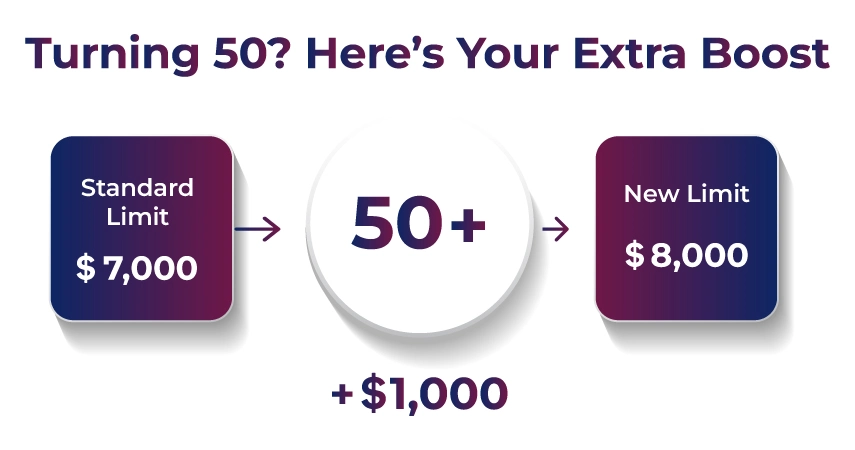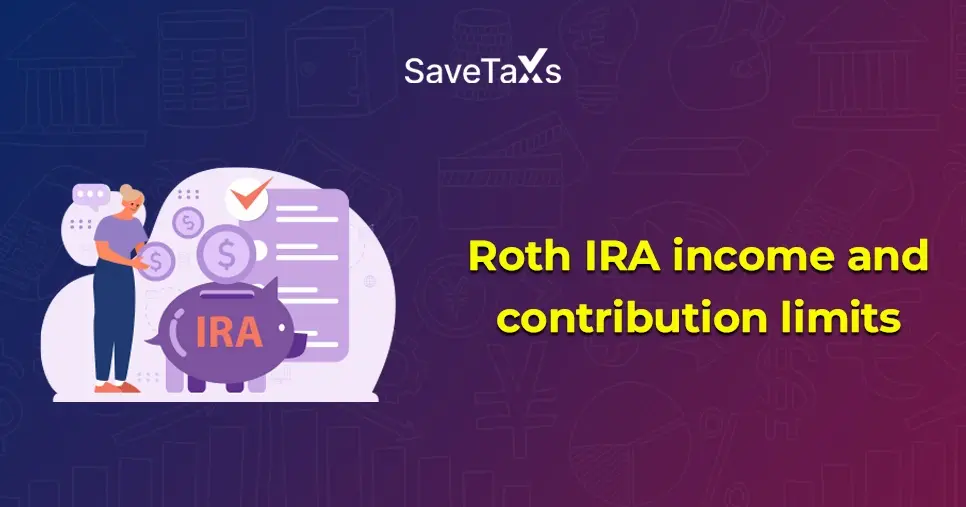Opening an Individual Retirement Account (IRA) is the most common way to save for retirement. There are no income limits for contributing to a traditional IRA, but the tax deductibility of those contributions may be restricted based on your income and retirement plan coverage.
However, how much you can contribute to a Roth IRA depends on how much you earn. Income limits for a Roth IRA determine the maximum earnings individuals or couples can have to qualify for contributions in a given year.
To make a full contribution, single filers must have a Modified Adjusted Gross Income (MAGI) for 2025 of less than $150,000. Similarly, joint filers must have less than $236,000 in income. Individuals of any age with qualifying earned income can contribute, with no age requirements.
Whether you can make the maximum Roth IRA contribution or not depends on your tax filing status and your MAGI. Keep reading further to learn more about the Roth IRA contribution limits.
Key Takeaways
- You must have earned income to be able to contribute to a Roth IRA.
- For 2025, the standard Roth IRA contribution limit is $7,000, with an additional catch-up contribution of $1,000 for those aged 50 or older, increasing their total limit to $8,000.
- You can contribute the full amount only if your MAGI is under the specified thresholds.
- For single filers in 2025, the contribution ability will be phased out if your MAGI is $165,000 or more.
- For married filing jointly, the ability to contribute phases out at MAGI of $246,000 or more.
- If your income exceeds the limit, you can still contribute indirectly to a Roth IRA by using the backdoor Roth IRA strategy.
- The deadline to make contributions for a given year is until the tax filing deadline of the following year. This means you can contribute to your 2024 Roth IRA until the tax filing deadline in April 2025.
What are the Roth IRA Contribution Limits?
A Roth IRA provides significant tax benefits. One of the primary benefits is that the money you invest in such accounts grows tax-free, eliminating the need to report investment earnings when you file your taxes.
Contribution limits for a Roth IRA specify the maximum amount an individual can contribute to their account each year. Remember that these limits are reset annually. Generally, the deadline to contribute for a given year is April 15 of the following year.
The Roth IRA contribution limit for 2025 is $7,000 or $8,000 for individuals aged 50 and above. This allows those nearing retirement to make additional contributions.
Filing status
|
Modified Adjusted Gross Income (MAGI)
|
Roth IRA Contribution Limit (2025)
|
|
Single, married filing separately (if you didn't live with your spouse at any point during the year), or head of household
|
Less than $150,000
|
$7,000 ($8,000 for those over age 50)
|
|
$150,000 or more but less than $165,000
|
Reduced contribution depending on your income
|
|
$165,000 or more
|
$0
|
|
Married, filing jointly, surviving spouses
|
Less than $236,000
|
$7,000 ($8,000 for those over age 50)
|
|
$236,000 or more but less than $246,000
|
Reduced contribution depending on your income
|
|
$246,000 or more
|
$0
|
|
Married filing separately (if you lived with your spouse at any point during the year)
|
Less than $10,000
|
Reduced contribution depending on your income
|
|
$10,000 or more
|
$0
|
Did You Know?
Generally, an NRI is not allowed to contribute to a Roth IRA unless they have U.S.-source earned income that is taxable and effectively connected with a trade or business in the U.S.
For instance, suppose an Indian citizen working in the U.S. temporarily on an H-1B visa is earning a salary that is reported on a W-2. Then, they may be eligible to contribute to a Roth IRA, subject to income limits.
However, if the same person lives in India and has no U.S. taxable income, they won’t qualify to contribute to a Roth IRA.
What are the Contribution Limits for Married Couples?
The Roth IRA contribution limits for married couples differ based on their filing status. Couples filing jointly have higher income limits for contributions compared to couples filing separately.
For example, married couples filing jointly in 2025 with a MAGI of $236,000 or less are eligible for full contributions. On the other hand, married filing separately filers have much lower limits, especially if they lived with their spouse at any time during the year.
Threshold for Married Couples Filing Separately
In 2025, married couples filing separately face strict Roth IRA contribution limits. They can contribute to a Roth IRA if their MAGI (Modified Adjusted Gross Income) is below $10,000 and they have lived with their spouse at any time during the year.
Contributions are phased out completely for couples with a MAGI of $10,000 or more. Married couples filing separately can contribute to a Roth IRA, but their income and contribution limits are significantly lower than for other filing statuses.
Married Couples Filing Jointly
Married couples filing jointly in 2025 can contribute to a Roth IRA if their MAGI is under $236,000. Each spouse may have their own Roth IRA, allowing them to contribute individually. The overall contribution limit for individuals is $7,000 or $8,000 if aged 50 or above.
Hence, a married couple can contribute nearly $14,000 or $16,000 together if both qualify and are aged 50 or older. Also, a nonworking spouse can contribute to a Roth IRA using a spousal IRA, provided the working spouse has enough income to cover both contributions.
What are the Phaseout Ranges for Roth IRA?
If your MAGI reaches the upper limits of the applicable phaseout ranges, your contribution may be reduced or “phased out.” The table below shows the applicable phaseout ranges:
| Filing Status |
Income Range for 2025 |
| Single |
$150,000-$165,000 |
| Married, filing jointly |
$236,000-$246,000 |
| Married, filing separately |
$0–$10,000 |
What are Roth IRA Catch-Up Contributions?
Roth IRA catch-up contributions are additional contributions that individuals aged 50 or older can make. These are designed to help such individuals increase their retirement savings as they near retirement age.

For 2025, people who qualify for catch-up contributions can contribute an additional $1,000. This increases their overall contribution limit from $7,000 to $8,000. The increased limit applies to every individual who fulfills the age criteria, allowing them to grow their savings in their Roth IRA accounts.
What If I Make an Excess Roth IRA Contribution?
An excess Roth IRA contribution occurs when an individual contributes more than the permitted limit in a specific tax year. If your contribution exceeds the annual limit, the IRS imposes a 6% excise tax on the excess amount for each year it remains in your account.
Before filing your tax return, you can withdraw the excess contributions and any earnings on them to avoid the penalty. Furthermore, you can apply the excess contribution toward the next year’s contribution limit.
What is a Backdoor Roth IRA?
Suppose you exceed the Roth IRA income limit - this is where the backdoor Roth IRA strategy comes in. A backdoor Roth IRA is a way for individuals whose income is too high to contribute directly to a Roth IRA to contribute.
Using this strategy, they can contribute to a traditional IRA and then convert those funds into a Roth IRA. This helps bypass income restrictions, allowing for tax-free growth and withdrawals from the account during retirement.
To Conclude
Roth IRA contribution limits require an individual to have sufficient earned income to make direct contributions. For 2025, the contribution limit is $7,000, plus an additional $1,000 catch-up contribution for those aged 50 or older. The eligibility to contribute the full amount is determined based on your Modified Adjusted Gross Income (MAGI).
Furthermore, if you are confused about the backdoor Roth IRA strategy, your eligibility based on MAGI, and need assistance in understanding the rules, then contact the experts at Savetaxs.
We have a team of professionals who can help you determine your eligibility and the amount you can contribute based on your MAGI. Our experts can help you prevent penalties for excess IRA contributions by ensuring accuracy.
We work around the clock across all time zones - so connect with us right away and get the best quality service and peace of mind, hassle-free.
Note: This guide is for information purposes only. The views expressed in this guide are personal and do not constitute the views of Savetaxs. Savetaxs or the author will not be responsible for any direct or indirect loss incurred by the reader for taking any decision based on the information or the contents. It is advisable to consult either a CA, CS, CPA, or a professional tax expert from the Savetaxs team, as they are familiar with current regulations and can help you make accurate decisions and maintain accuracy throughout the process.
 India
India
 USA
Tax Consultancy Services
USA
Tax Consultancy Services





















